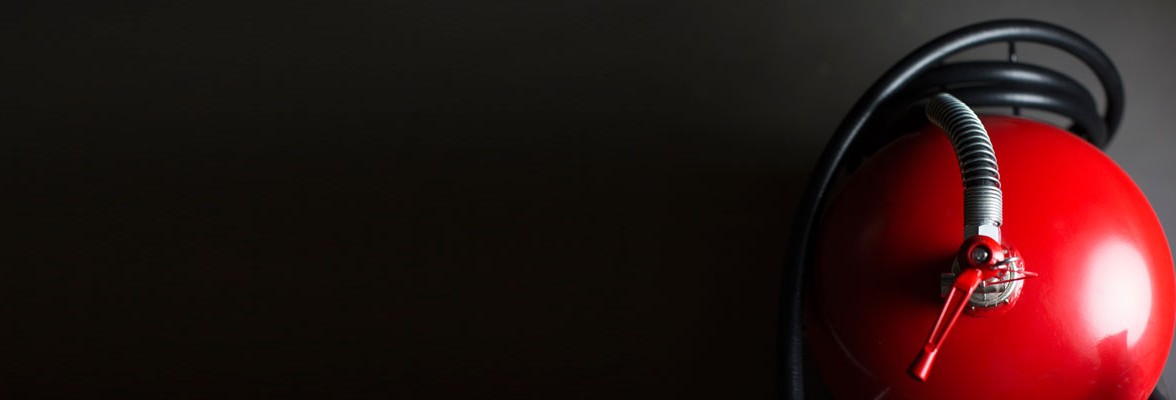YOUR CART
- No products in the cart.
Subtotal:
$0.00
BEST SELLING PRODUCTS

Smoke detectors are one of the most essential devices for protecting properties against fire incidents. While they are required in buildings, they go beyond regulatory compliance, as they save lives and minimize property damage during fires. The latest research on United States home fires shows that fires in properties lacking smoke alarms or with non-functioning alarms accounted for approximately 60% of all home fire deaths.
Whether you are managing an office building, a retail space or a manufacturing facility, understanding how smoke detectors work and where to place them is a critical step every business should take. This guide takes you through fire safety tips for businesses, the basics of commercial smoke detectors, how to choose the right types, where to install them for maximum effectiveness, and how to integrate them with a broader fire safety plan.
While smoke detectors all serve the same essential purpose — alerting occupants to smoke — not all detectors operate the same way or offer the same level of protection. Fire risks also vary from property to property.
Therefore, it is important to understand how fire detectors work and what types are available for your building or commercial use. Knowing the basics allows you to determine what works best for your property.
Smoke detectors generally fall into the following categories based on the different technologies that determine how they function:

When choosing smoke detectors for your business, you will likely encounter three commercial smoke detector types:
Choosing the right mix of detection technologies and detector types will depend on the size, layout and function of your building. For a safer, compliant fire safety system, consult with professionals who can help you select the best smoke detector technologies and types for your property.
Strategic smoke detector positioning is critical in commercial settings to ensure early detection and avoid costly false alarms.
To enhance reliability, install smoke detectors in these areas:
These locations are high-traffic or high-risk zones where early detection is especially important.
The National Fire Protection Association (NFPA) provides clear standards for smoke detector placement, spacing and installation to minimize risks. According to these guidelines, place detectors:
Installing smoke detectors in a building is only the first step to fire protection. While smoke detectors are your first line of defense, they should work in collaboration with a broader fire safety plan. Here are tips for your building’s fire safety plan:
Keeping smoke detectors operational requires regular care and maintenance. To ensure proper function, test your smoke detectors at least once a month. Press and hold the test button until the alarm sounds. If the sound is low or silent, you will need to either replace the batteries or the detector.
For system-connected commercial detectors, testing may involve running system-wide checks through the control panel. This should be performed by a qualified technician as part of a regular fire safety inspection.
Smoke detectors alert you to smoke, but you will need the appropriate fire extinguishers on standby for a quick response. Every commercial building should have the right number and types of fire extinguishers readily accessible, with staff trained to use them. Always place fire extinguishers somewhere easily accessible and visible.
Once smoke is detected, automatic sprinkler systems can contain or suppress a fire before firefighters arrive. While not a substitute for smoke detectors, they significantly reduce the spread of flames. The right sprinkler components, including sprinkler heads, valves and pipe fittings, can help you maintain or upgrade your existing system when needed.
A well-designed fire detection and suppression system is only part of the equation. To keep employees and building occupants prepared, develop and post clear evacuation routes and conduct regular fire drills. Your system may detect the fire, but the people in the building need to know what to do next to protect themselves and reduce property damage.
Any commercial building, from businesses to industrial facilities, should have someone responsible for fire safety. Ideally, it should be a team that oversees the fire protection systems. While the extent of your fire safety resources and the number of people you assign for fire roles depend on the size of your business, it is important that you designate at least one individual.
The person or people responsible for fire safety should undergo basic fire safety training to recognize risks, maintain resources and implement safety standards.
Smoke detectors are more than a box to check off. They are your building’s first warning when something goes wrong. Knowing how they work, where to place them and how to keep them in good shape can make all the difference in keeping people safe and minimizing damage.
However, detection alone is not enough. Integrating smoke detectors with fire extinguishers, sprinklers and a clear evacuation plan creates a comprehensive solution that is far more effective.
At National Fire Supply, we support your fire safety strategy with essential products like extinguishers, sprinkler components and valves to help ensure your commercial building has a robust fire detection system. Contact us today to develop a reliable fire safety plan.